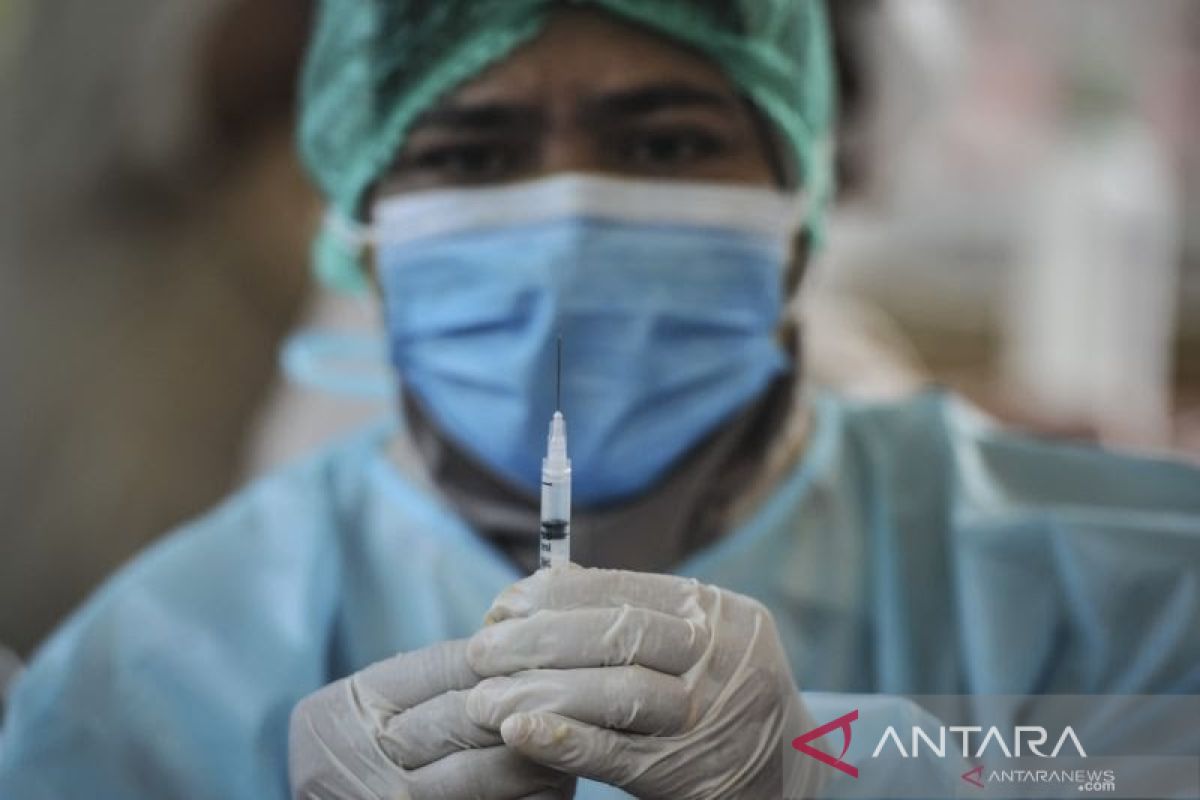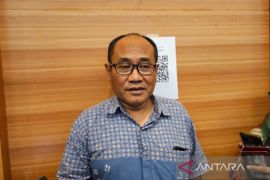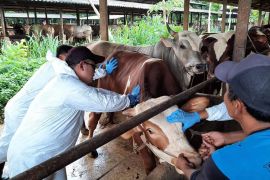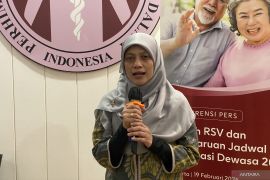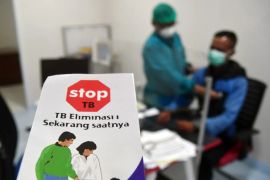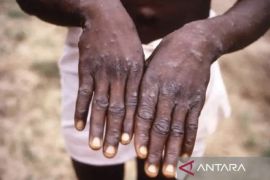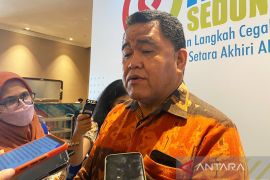The nation’s first and the second patients were a 64-year-old mother and her 31-year-old daughter from Depok, West Java Province.
Since then, the nation has experienced three waves of the pandemic. In total, more than 5.5 million people have been infected and 148,660 have died.
For curbing the spread of COVID-19 in Indonesia, the government launched COVID-19 vaccinations on February 13, 2021, during the peak of the first wave of coronavirus infections, when a record of 89 thousand cases were reported. At that time, vaccines were prioritized for health workers who were at the forefront of handling this pandemic.
Almost a month ago, the government expanded its vaccination target to 208 million people to cover more communities, starting from the elderly group (22.5 million) and workers through the Mutual Cooperation Vaccination program.
In the midst of the government's efforts to expand vaccination coverage to two million doses per day, Indonesia was hit by a second wave following the emergence of the Delta variant, which peaked in July 2021, with a record 56,757 confirmed cases and 2,069 record deaths reported nationwide.
A sufficient supply of vaccines in the country encouraged the government to expedite vaccination coverage to 141 million people belonging to the productive age and teenagers in August 2021.
It was not until November 2021 that more than 100 million people received the first dose of the COVID-19 vaccination. Meanwhile, the second dose was administered to more than 57.5 million Indonesians. Thus, the number of vaccinations reached 157,707,427 doses at that time.
This means that the first dose coverage reached 48.11 percent of the targeted recipients and the second dose 27.62 percent of the targeted recipients.
Along with this, the World Health Organization (WHO) stated that as of November 3, 2021, all provinces in Indonesia were at Level 1 community transmission level, with virus transmission measured at a minimum of 20 per 100 thousand population, the number of hospitalizations five per 100 thousand population, and one death per 100 thousand population.
The relaxation after the Delta wave subsided did not last long. In early 2022, Indonesia entered the third wave of the pandemic due to the emergence of the Omicron variant, which was reportedly first spread by an Indonesian citizen who came from Nigeria on November 27, 2021.
Data from the Ministry of Health reported that the highest number of Omicron cases were reported on February 16, 2022, at 64,718.
However, the number of COVID-19 patients being treated in hospitals remained still under control, accounting for 38 percent of the isolation and ICU capacity provided by the government.
The role of vaccinations
Indonesia recorded the highest cure rate on February 25, 2022, when 61,361 patients recovered from the infection. This figure exceeded the highest achievement during the Delta wave, when the highest number of recoveries reached 48,832, as of August 6, 2021.
Public health expert from the University of Indonesia, Pandu Riono, assessed that the situation was influenced by the population’s immunity, both due to the COVID-19 vaccination and natural immunity.
Based on a report from the COVID-19 Task Force, the number of people receiving the first vaccine dose during the Delta wave reached 49,391,058, and the second dose, 22,891,824 people. Meanwhile, during the Omicron wave, the number increased by 190,531,114 people for the first dose and 143,280,295 people for the second dose.
This number does not include people who received booster vaccines that totaled 9,542,165.
"This shows that the people’s immunity plays an important part. It means that whatever the variant is, vaccination is expected to prevent severity and death," Riono said at a virtual press conference.
Moreover, Pandu reported the results of his research on the proportion of COVID-19 patients who died, based on vaccination status, in Indonesia from March 1, 2020, to February 16, 2022.
The mortality rate in patients who had received the second dose of the primary vaccine was 0.5 percent, while the mortality rate for patients receiving the first dose was 2.3 percent. This number was relatively lower than the cases of death among unvaccinated patients, which reached 7.5 percent.
Other factors responsible for mortalities included comorbid or congenital diseases, such as diabetes mellitus, kidney disease, hypertension, heart disease, or a combination of these comorbidities.
As per data from the Ministry of Health, which analyzed 17,871 patients treated in hospitals from January 21 to February 22, 2022, 2,489 of the patients died. Most of them were not fully vaccinated.
Meanwhile, the risk of death among non-elderly people without comorbidities who had received booster vaccines was 0.49 percent. The risk of death for the elderly without comorbidities who had received a booster vaccine was 7.5 percent.
In the meantime, the risk of death in non-elderly people without comorbidities who had completed vaccinations was 2.9 percent. While the risk of death among the elderly without comorbidities who had received the complete dose of the vaccines was 22.8 percent.
The number of deaths among people with comorbidities who had not received the full vaccination dose was 739 compared to 20 in the booster vaccine group.
Thus, complete COVID-19 vaccination plus a booster dose can provide protection of up to 91 percent from death, or the risk of becoming seriously ill with SARS-CoV-2, Pandu said.
Vaccination distribution
Data from the vaccination dashboard of the Health Ministry shows that the speed of daily vaccinations is in the range of 1–1.4 million doses per day, which has moved steadily throughout early February 2022 until now. So far, more than 50 percent of Indonesia’s total population of 270 million has received the full dose.
Based on vaccination coverage data, there are currently seven provinces with full vaccination coverage of below 50 percent: Central Sulawesi (48.63 percent), Aceh (48 percent), West Sulawesi (45.79 percent), North Maluku (43.54 percent), West Papua (39.22 percent), Maluku (39. 09 percent), and Papua (22.87 percent).
Spokesperson for COVID-19 Vaccination for the Ministry of Health Siti Nadia Tarmizi said she is optimistic that 70 percent of the Indonesian population will be fully vaccinated by June 2022.
As of March 1, the stock of COVID-19 vaccines in Indonesia has been pegged at 450 million doses. Some 45–50 million doses are still at the stage of production at Bio Farma's facilities and another 10 million doses are ready to be distributed, Tarmizi said.
The remaining 383 million doses are in the process of being distributed to regions, she added.
"If you look at the availability of the vaccine stock, this is enough to reach remote areas. Our current focus is booster vaccination, which is only 10.2 million from the target. We are focusing on accelerating the booster vaccine,” Tarmizi said.
Efforts to distribute vaccines to all regions are being assisted by local governments, which are delivering the vaccines to remote areas, she said.
In addition, the government has also involved the National Police (Polri) and Defense Forces (TNI) to help Community Health Center (Puskesmas) officers in administering vaccinations in the outermost, remote, borders, and underdeveloped regions, she informed.
"In fact, we are also involving missionaries who play an important role in providing vaccination services, such as in remote areas of Papua," she remarked.
The Health Ministry has also asked policymakers in the local government to use creativity to expand vaccination coverage, especially among the elderly through, a variety of interesting work programs, she said.
"There have been many mobile, door-to-door, custom-based vaccination strategies, even now Polri is conducting vaccinations with cooking oil as prizes," she informed.
Although the current national vaccination coverage has tended to contribute to the decline in cases amid the third wave in the last ten days, the community must remain alert to the possibility of the emergence of a new variant of COVID-19—something that is not too easy to predict, she added.
Related news: Ministry speeds up vaccinations as vaccines reach expiry date
Related news: Task force calls for public commitment in following health protocols
Related news: Govt must remain vigilant despite COVID-19 downtrend: Speaker
Editor: Rahmad Nasution
Copyright © ANTARA 2022
